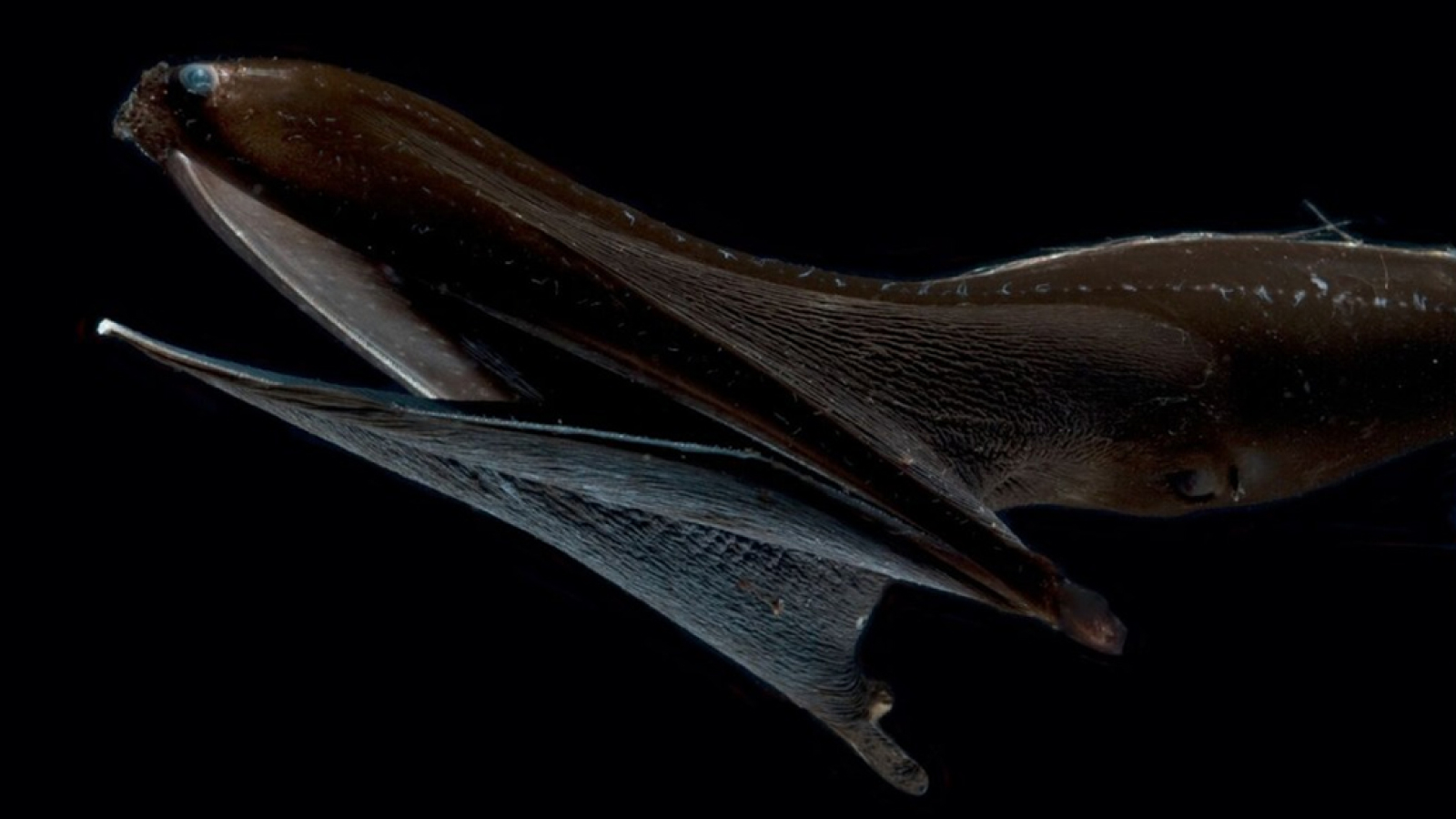QUICK FACTS
Name: Pelican eel (Eurypharynx pelecanoides)
Where it lives: In tropical and temperate regions of the deep ocean, at depths from 1,600 feet to nearly 10,000 feet (500 to 3,000 meters)
What it eats: Crustaceans, fish, squid and other marine invertebrates
As it drifts through the inky blackness of the “midnight zone” in the deep sea, the pelican eel undulates its narrow, whiplike tail and long, snakelike body. It’s hard to imagine its slender form consuming large prey — that is, until the eel unfolds its jaw like an umbrella and yawns its cavernous sac of a mouth.
Like its pelican namesake, this eel has an elastic pouch under its lower jaw that balloons open as its jaw gapes wide, engulfing anything unlucky enough to be swimming close to the eel’s head. And with an expandable throat and stomach, a pelican eel can scoop up animals larger than its own body, swallowing prey whole while filtering the mouthful of water through its teeth and gills.
Watch On
The pelican eel, also known as a gulper eel, measures about 3.3 feet (1 m) long and has deep black skin that absorbs nearly all light, making it practically invisible in the dark depths of the ocean.
The hinged lower jaw of a gulper eel is about one-quarter as long as its entire body. While its mouth is enormous, it has tiny eyes and very small teeth. It also lacks scales and a swim bladder, which fish use to regulate their buoyancy. Its pectoral fins are so reduced that they are barely visible at all.
As a result, the pelican eel is a poor swimmer and hunter. But its gaping maw makes the eel an exceptional opportunistic predator. A light organ, or photophore, at the tip of the eel’s tail glows pink or bright red in the dark water and is thought to act as a fishing lure, attracting prey close to the eel’s massive trap of a mouth.
A pelican eel’s elastic stomach can stretch significantly to hold a hefty meal. In 2023, scientists were exploring waters near Costa Rica using a remotely operated vehicle, when they spotted a pelican eel that had recently eaten. As it swam away from the camera, its belly was visibly and dramatically distended. Its shape hinted that the eel’s recent dinner was a squid, the researchers reported.
When male pelican eels become sexually mature, their jaws weaken and they lose teeth but grow larger olfactory organs, improving their sense of smell. This likely helps them find mates. But as is the case with many deep-sea dwellers, there is still much to be learned about this species’ habits and behaviors in the wild.
